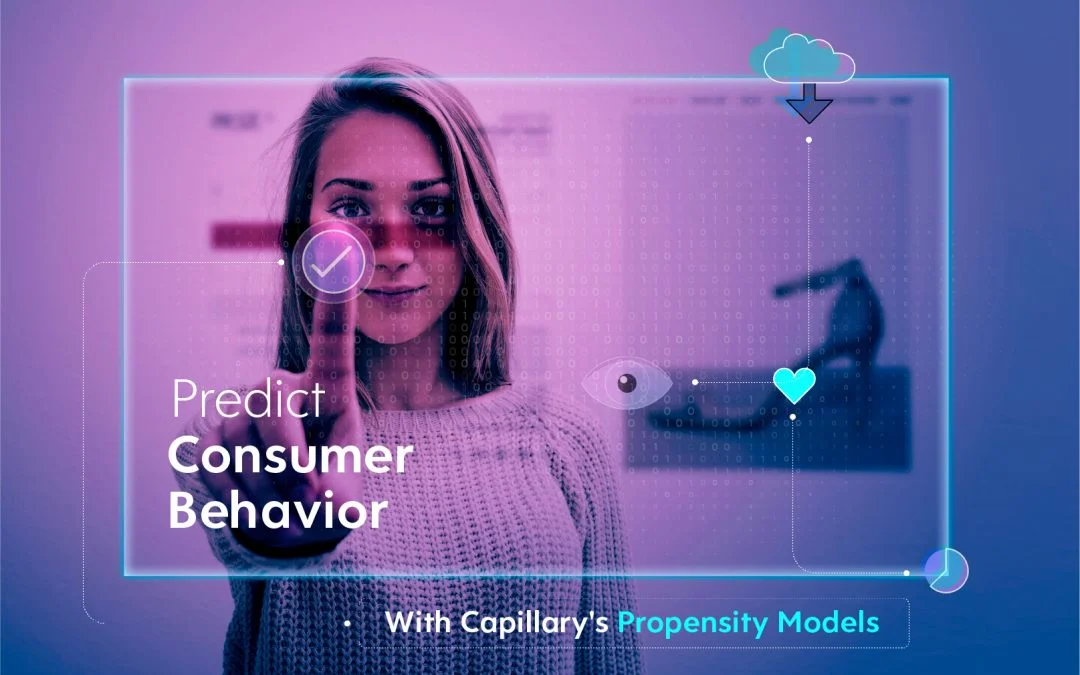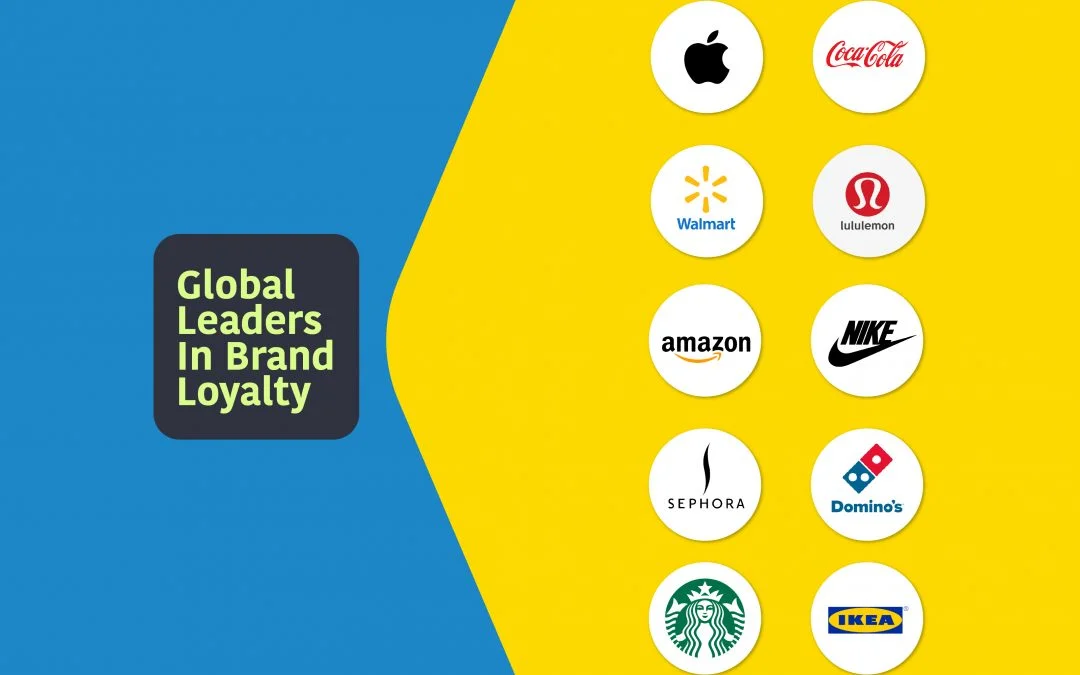- Design industry shaping loyalty programs
- Integrate easily and go live quicker
- Deliver hyper-personalized consumer experiences
Accor Plus - The Subscription Loyalty Proposition Leading the Global Hotel Industry in Loyalty TV's latest episode Watch Podcast >

When consumers become committed to a particular brand, a behaviour pattern is observed which makes them make repeat purchases over a period of time. Businesses use creative marketing strategies such as brand loyalty programs or reward programs, brand ambassadors, trials and free samples to build loyalty towards their brands.
Companies use different tactics to create brand loyalty in a highly competitive market, where there are a lot of established and new players. They will study the buying and shopping patterns of their customers, build relationships through a robust and excellent customer service and engage brand spokespersons to attract new customers and retain old ones. Consumers typically purchase from their favourite brands; and price and convenience will definitely not stop them from being loyal.
Brand loyalty addresses the most important requirements and needs of its customers. Loyalty leads to retaining of old customers and an increase in profits. When this happens, it is considered to be a successful program.
Studying consumer habits and purchasing behaviour are trends that are studied regularly and over a period of time. Some trends do not change, but there are others that evolve over a period of time. Companies collect and analyze data of their customers, in order to be able to understand how to market their products. Marketers track changes and change their marketing and promotional campaigns accordingly, in order to be able to retain their brand loyal customers. Companies hire brand ambassadors to be spokespersons for their products, promote the brand’s image and stimulate interest in their products. By this, the company hopes to influence purchasing behaviours of customers. Brand ambassadors can prove that word-of-mouth is an effective tool to disseminate information.
Companies need to continuously monitor and research their products and services to find out how effective they are in the long run and make suitable modifications that will add value to their customers, thereby increasing brand loyalty. When a company ignores consumer trends, it usually leads to a decline in market value, profits, market share and most importantly, they start losing loyal loyal customers. A classic example is Blockbuster, which once had a monopoly in the market but failed to capitalize on it simply because their product was not aligned with their customer’s growing needs, behaviours and environment. Responding too late to trends is as detrimental as coming second in the market. To assume that a product will always meet the needs of consumers is a sure recipe for disaster.
Keeping the customer happy and making them advocate for your brand involves more than great service. How will you ensure that this customer keeps coming back to buy your product in the future? One great way to ensure returning customers is to have a robust customer loyalty program. In fact 76% of customers agree that a brand loyalty program is a great way to foster a bond between the customer and the brand. A customer loyalty program is a marketing technique to retain loyal customers and to attract new ones. It is a rewards program that rewards customers that frequently conduct business with a company.
What does a good brand mean? How can a brand be valued at billions of dollars? After all, aren’t they simply the byproduct of clever marketing strategies and smart product positioning?
Brands bring in a sense of value to their customers, ensuring a promise that they will always deliver on quality and credibility. For example, if you are looking for running shoes, you might not look beyond Nike or Adidas. In case of cars, even if you have absolutely no inkling about them, you somehow have this subconscious realization that Mercedes makes good vehicles.
If you walk through the doors of a McDonalds you know exactly what you will be getting. People associate their positive experiences and memories with a brand and develop loyalty to it – a loyal customer is often undeterred by price fluctuations or momentary lapses in quality or customer service.
It is interesting to note that brands do not have to mean something to all the people, in order to be successful. For example, Apple does not attempt to be appealing to all its customers and they are aware of people out there who hate the very brand and would not buy anything associated with it. Similarly, there are customers who hate the very idea of shopping at WalMart, a value-for-money retailer. On the other side, there are people who live on WalMart purchases throughout the month and stretch their paychecks as much as possible and have absolutely no problem with the no-frills, low-cost approach.
Brands definitely matter and they offer a certain amount of value to their customers, irrespective of how WPP estimates brand value. There is not much difference in taste between Coca-Cola , Pepsi and other cola-flavoured beverages to explain the discrepancy in valuation, but over a period of time, they post significantly higher returns on capital than their industry peers. With each passing year, these differences accumulate and companies with valuable brands generally produce better market returns.
The above thought does not mean that investors should ignore or avoid companies that do not or cannot build a brand around their business. They should not limit their thinking or analysis to trailing sales, book value and other easily quantifiable fundamentals. There might be some doubts about the valuation of companies and sometimes a prestigious brand is often all that stands between two products that cannot be distinguished; all that exists is a thin line between a super product and a run-of-the-mill outcome.
Businesses that operate in competitive markets constantly need to come up with innovative ideas to differentiate themselves from their competition and to stay close to their customers. The constant pressure of low margins and fixed costs hangs over their head. And the threat of low-price competitors cannot be done away with. When price remains more or less the same, companies have to look for other differentiators.
One such advantage that businesses can offer to their customers is through customer loyalty programs. They not only give an additional benefit to their customers during price wars, but they also prevent customers from switching loyalty to other brands. When these programs are run well, they can contribute up to 20% to a company’s profit. It is no wonder then that US companies spend 25 Billion USD every year on loyalty programs.
What is the beginning of Loyalty Programs? Around the 1970s it was found that businesses that had a better relationship with their customers had better customers. This in-turn generated better business. It started off as a marketing strategy for small and medium businesses that used the information collected in their database about their customers, to monitor and manage their behaviour and spending habits.
There are plenty of brand loyalty programs in modern times, but most of these can be slotted into two different categories; Standalone and Partnership.
The most common loyalty membership today is the standalone program where customers get rewarded for shopping with the company that offers the program. Points can be redeemed only within the range of products offered by the program owner. For example, if I buy products from Bath and Body Works, I can redeem my points for products within the brand or store.
Often brands partner with other brands to offer their customers new and unique shopping and experiences. There is more than one company that participates in this program. Customers are rewarded for doing business with all the participating companies. Loyalty points can be redeemed within all the products offered by the participating companies. For example, if I earn points with the Wyndham group of hotels, I can also redeem my points with the Casino group of hotels that is partnered with the Wyndham chain.
What do customers want? The problem with any good customer strategy is that every company wants to copy a successful loyalty program without giving much thought to whether this program would work for their customers. Sadly, most of these fail miserably; not because of a fault with the concept, but because it isn’t based on careful analysis of customer behaviours. Every brand loyalty program should include :
The reward program should offer instant gratification, rather than saving the best for the last. Customers are attracted to attainable reward programs. But what matters in the long run is the relationship that the business cultivates with its customers.
From a brand’s perspective, the ultimate motivate of a loyalty program should not simply rewarding customers; rather the focus should be on cultivating brand loyalty and discourage customers from switching brands or stores.
When it comes to brand loyalty programs, there are no one-size-that-fits-all kind of a customer strategy. The loyalty program should be designed in such a way that it addresses the needs of different segments of customers. It should first identify the needs and requirements of its customers; then analyze the purchasing habits of their customers and so on. If the business can partner with other like-minded companies to offer new and exciting shopping experiences, this would definitely work out to be a very successful marketing strategy.
According to Sephora’s rewards program, customers earn 1 loyalty point for each dollar they spend at Sephora retail stores, on Sephora websites or Sephora stores that are present inside JC Penney Stores.
Sephora’s program has a mobile app, but customers need to use their email address when they check out, to accumulate points.The mobile loyalty program is divided into 3 tiers and features unique rewards like birthday gifts and a private hotline to exclusive events and free beauty classes.
Starbucks issues stars as a loyalty indicator. What differentiates it from many large-scale loyalty programs on the market is that it is simple and easy to use. It has only 2 tiers – Green and Gold. The first tier works very well because it is convenient for both existing and potential customers. Perks include:
Apart from enjoying personalized rewards, Gold-tier members also get a personalized card which they can use instead of the mobile app, if they want to.
Neiman Marcus’ loyalty program is a points-based rewards system, where customers earn 2 points for every dollar they spend. This places a lot of emphasis on advancing to the next program tier. The system has 5 regular tiers and 3 luxury-type tiers.
Customers can earn double loyalty points through exclusive private offers, events and perks. Members placed on a higher are offered rewards such as personalized travel services, sartorial consultation and high-end restaurant reservations.
The program’s highlight is its Perk Card which offers numerous privileges. Moreover, when members accumulate 10,000 loyalty points, they also get a $100 Points Card.
Consumers who sign up for Kohl’s program are enrolled on a cash back points-based system, where they earn 1 point for each dollar they spend (no matter how they pay). Once they reach 100 points, they get a $5 reward.
Also, every year, program members receive a birthday present along with 8 extra savings offers. In addition, members can also earn bonus points on various occasions, and other surprises too.
The program is available on both iOS and Android devices on their app.
Bulletproof is known both for its coffee shops and also for its online store where people can buy products that are coffee-related, as well as plenty of food items and drinks. Their loyalty program is mostly built around online purchases, which is a strategy that one does not see enough of, nowadays.
The program itself is a points-based system, and customers can earn points by:

November 2, 2024 | 6 Min Read
As the backbone of predictive marketing, Propensity Models u

December 3, 2024 | 6 Min Read
The Holiday Season offers an opportunity to do more than jus

November 1, 2024 | 4 Min Read
Indeed, it has come a long way. In the world of retail, loya